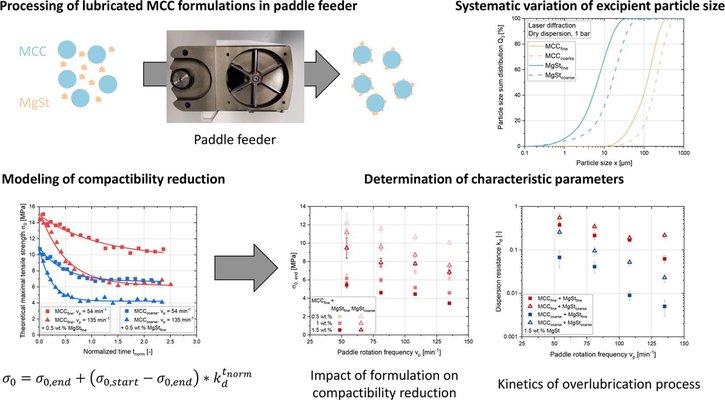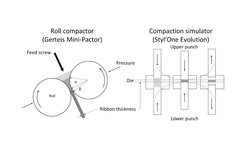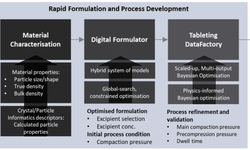Scientific papers
In rotary tablet presses, the entry of powder into the dies is commonly facilitated by a paddle feeder. In formulations with internal lubrication, the shear forces generated by paddle rotation can significantly decrease tablet strength by dispersing lubricant agglomerates. Existing models describing lubricant dispersion in paddle feeders have limitations in providing a comprehensive quantitative description and applicability to the process. This study introduces an empirical dispersion kinetic that accurately characterizes the reduction in compactibility due to shear stresses within the paddle feeder, even for materials with uneven flow.
Furthermore, the investigation explored the impact of bulk properties on lubrication dispersion in the feed frame by blending different grades of magnesium stearate at three levels of lubricant concentration with two different grades of microcrystalline cellulose. The findings indicate that, for a given formulation, the kinetics of compactibility reduction are comparable across different concentrations of magnesium stearate. Additionally, the bulk properties of the specific magnesium stearate grade used critically influence both the dispersion kinetics and the maximum compactibility reduction within the feed frame.
In summary, this developed model serves as a meaningful expansion of current process models for pharmaceutical tablet lubrication, offering improved insights into the complex dynamics of lubricant dispersion in paddle feeders.

Comments
No comments posted yet.
Add a comment















